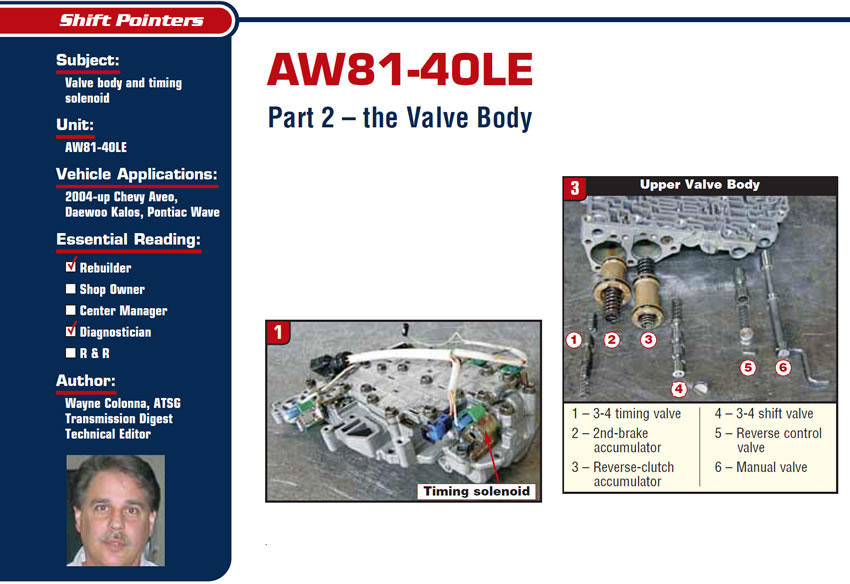Ford 6F50 and GM 6T70: Similar but Different
The 6F50 and 6T70 transaxles were developed as a joint effort between Ford and General Motors. Because this was a joint effort, as you can imagine many of the internal parts are very similar or almost identical. In this article we talk about the solenoid body and what is similar but different.
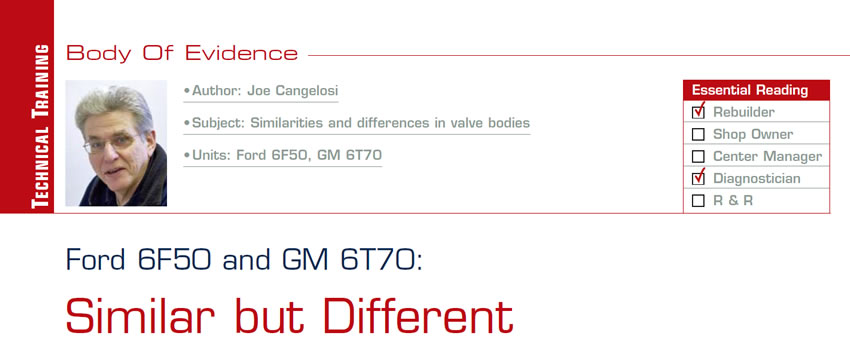
Identifying the 5L40-E and 5L50-E Transmissions and Valve Bodies
The 5L40-E and 5L50-E transmissions and valve bodies look the same at a glance. On the Cadillac, Pontiac Solstice and Saturn Sky, you can look on the service-parts identification label to identify the transmission by the RPO (Regular Production Options) number.
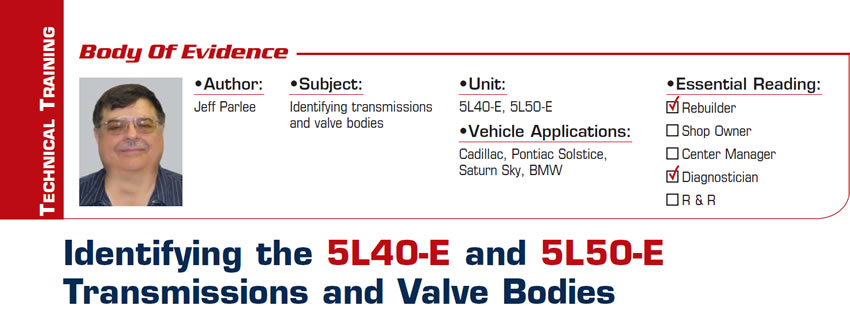
4T65-E Valve-Body and Channel-Plate Identification
Let’s start with the valve body. Unfortunately, there are no casting numbers on the 4T65-E valve body for quick identification. The four most-common 4T65-E valve bodies are the early GM, late GM, early Volvo and late Volvo. There are more than four variations, and they can be found during the crossover years of 2002 and 2003. There are four questions that you need to answer to properly identify the valve body.

Similar but Different: A look at Ford’s 6R140W
For the 2011 model year Ford Motor Co. replaced the 5R110W in its Super Duty pickup trucks with a full-time six-speed transmission. Those of us in the aftermarket industry are calling this transmission the 6R140W. Ford likes to call it the TorqShift®6.

Aisin AW Linear Solenoids
In this article, the AW 55-50/51 five-speed (also known as AF 23/33) will be referred to as the AW 5.
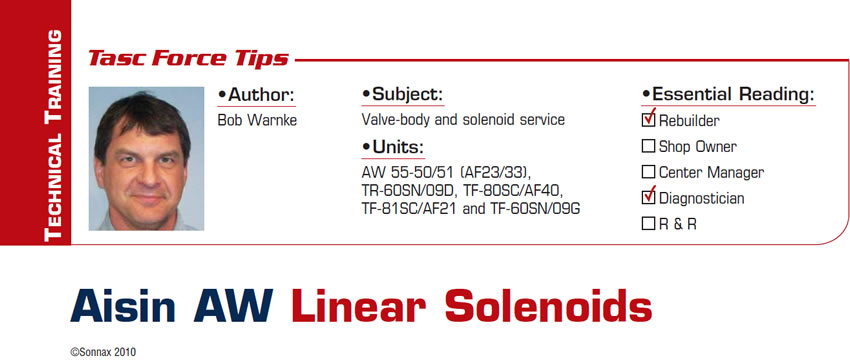
Plug that Bore: U150/250 shift complaints
Valve-body bore wear has become so common that one can just about predict which bores will wear when a new transmission hits the streets. Any valve that is regulating is up for grabs. TCC, pressure control, clutch regulating valve, whatever you want to call it, if it moves back and forth quickly and consistently, more than likely it’s going to wear the bore.
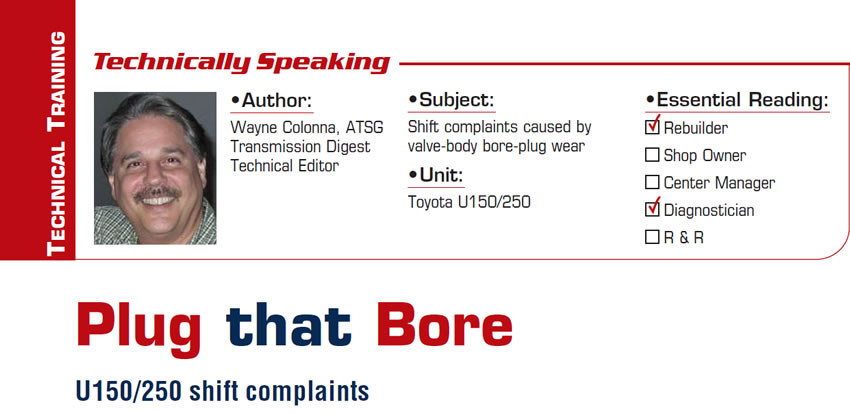
GM’s 2MT70
Getting into the valve body is all we need to do to finalize our brief look at GM’s front-wheel-drive two-mode hybrid transmission.
If you recall from the first article, the TCM and solenoid-body assembly is first removed from the transmission followed by the plate attaching the assembly to the valve body (figures 1, 2 and 3).
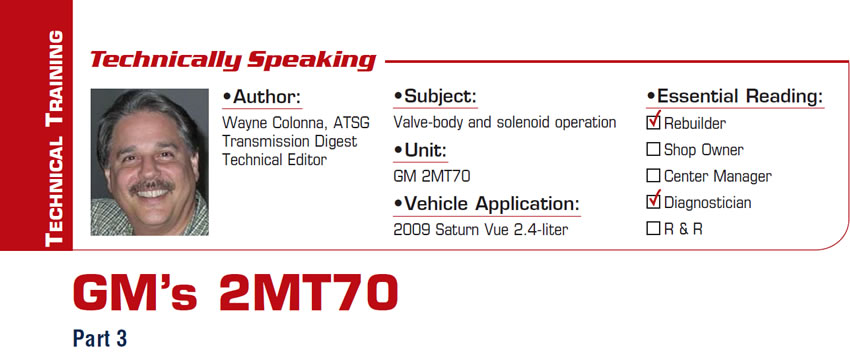
Another Option
I am sure that all of us who are in our late 40s and older can agree that valve bodies today are not what they used to be. Bore wear, valve wear, sleeve wear and leaking bore plugs are frequent ailments in most transmissions today.
Thanks be to several aftermarket companies that have developed repair kits to overcome these hurdles, saving transmission shops the expense of a new valve body.
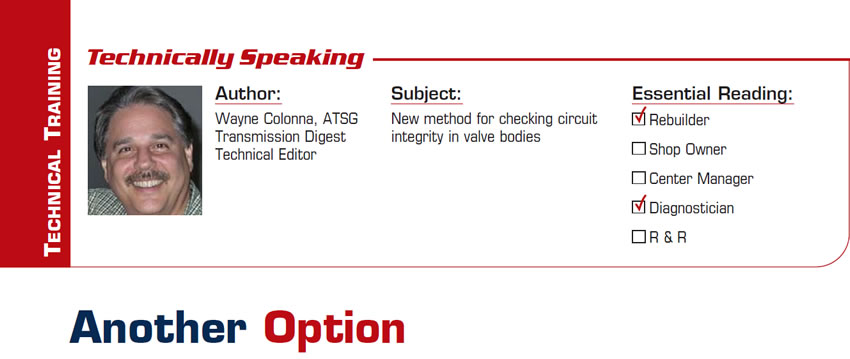
Valve-Body Reaming
When it comes to reaming valve bodies, there are always questions about how to approach things the “right” way. It pays to keep in mind that reaming a valve-body bore to allow installation of an oversized valve or sleeve is a precision operation and must be viewed with the mindset of a machinist. Properly maintained equipment, correct setup and the right cutting fluids are critical in achieving success. Here are a few suggestions we have compiled over the years in response to common inquiries.
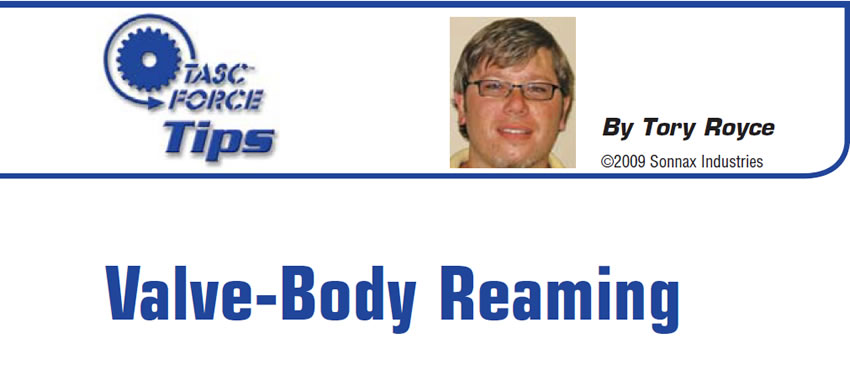
Chrysler RWD Valve-Body-Linkage Pivot Wear
The basic design of the internal shift linkage of Chrysler/Dodge rear-wheel-drive transmissions has not changed since 1967 (Figure 1). As movement, vibration and wear take their toll over time, looseness of the internal linkage becomes a big problem. When there is excess movement in the manual lever, the manual valve is not held precisely in position, resulting in fluid leakage, cross leaks and unit failure.
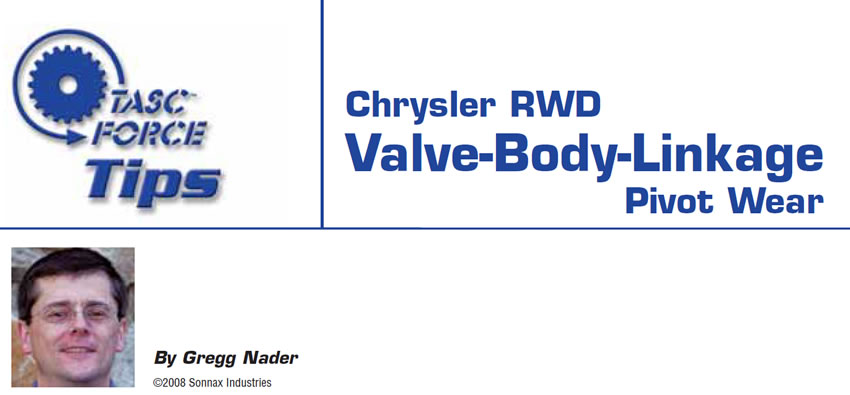
Oddities & Wear-Out, Part 2
Continuing this month with the information provided by Jim Dial on the U-series 140/240 transmission we cover some common wear-out areas in the valve body that can cause this unit to fail again prematurely. The best thing about this is that they are all sleeves and are easily repaired. These items were discovered as the U140/U240 Technicians Diagnostic Guide was being written.
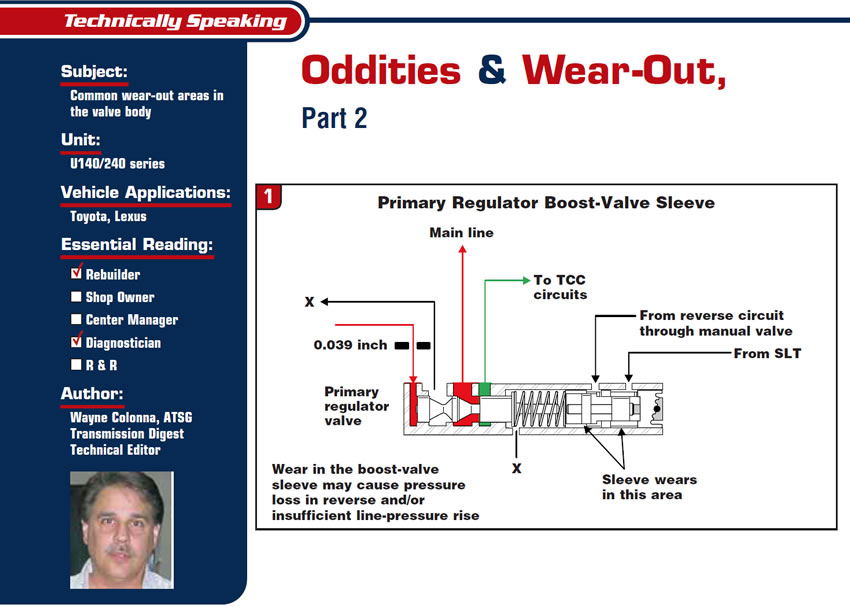
AW81-40LE: The Valve Body
Picking up where we left off last month as promised, we are going to take a closer look at the valve body and the operation of the timing solenoid (see Figure 1). But before we get into it, there are a couple of things to be aware of.
